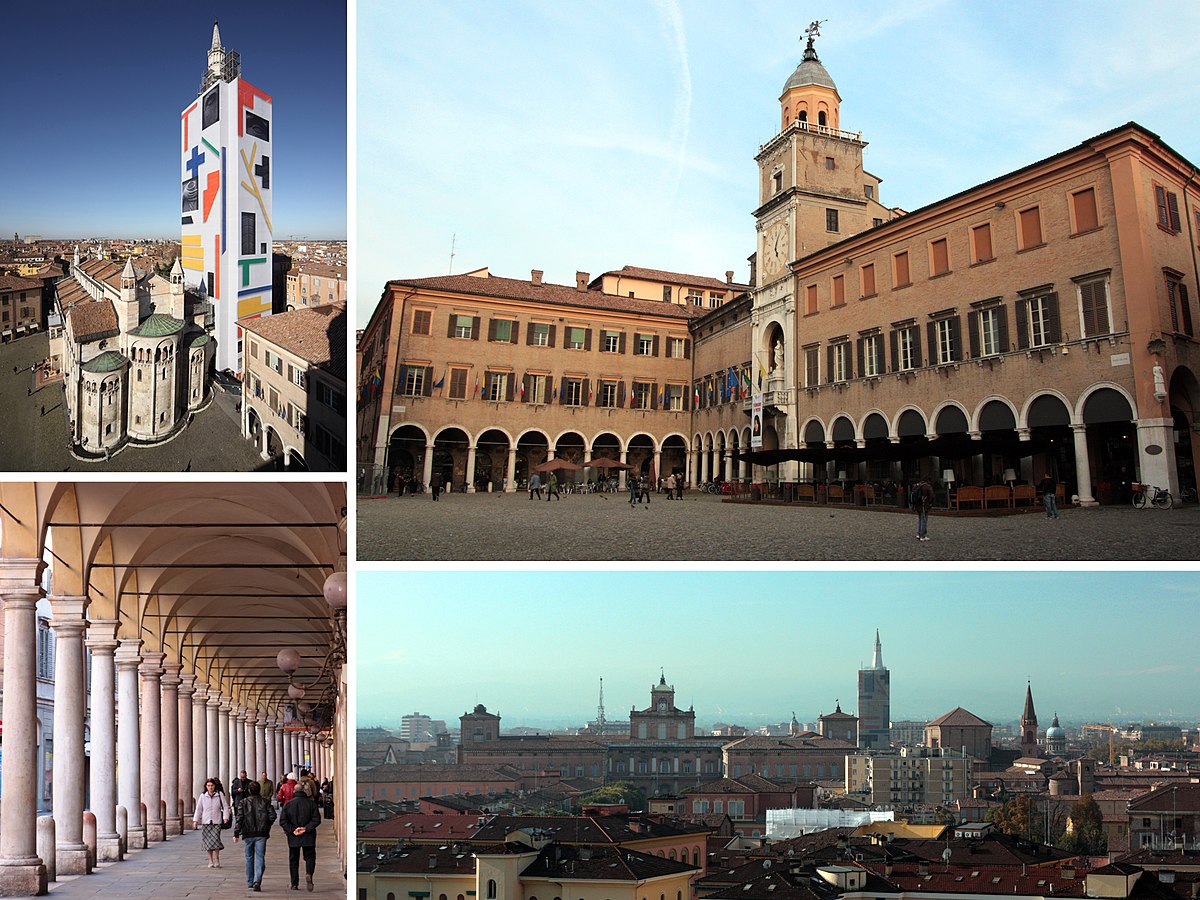 Modena
Modena
Although MODENA is only half an hour by train from Bologna, it has a completely different character. The city claims to be the spiritual capital of Emilia, which underlines the long-standing and sometimes fierce rivalry with Bologna. In fact, however, these claims are somewhat exaggerated. As in other cities and in this area, there is an abundance here and a lot of attention is paid to food, fashion and comfortable life. But it is also an unpretentious city, with a medieval center resembling others in northern Italy.
With all this, it remains true, that Modena has something to be proud of. Luciano Pavarotti was born here and he sometimes gives improvised recitals in the market, and the cathedral is considered the most beautiful Romanesque building in the region. In turn, industry flourishes in the periphery: The spinning mills and pottery factories in the surrounding plain have high income, there is also a factory nearby, where Ferrari produced its prestigious cars, and Formula models 1 he tested on the track in nearby Fiorino.
Practical information: travel and accommodation
To walk from the train station on Piazza Dante to the center of Modena, that is, to Piazza Grande, it takes fifteen minutes; the wide Corso Vittorio Emanuele II leads there. Bus Station, from where you can get to the village on the plain and in the Apennines, it is located in via Bacchini, ten minutes walk from Piazza Grande. The EPT office is located a few houses from the market square in via Emilia Centro 179 (codz. 10.00-12.30 i 15.20-18.20).
The most promising accommodation area is between Piazza Grande and the bus station, with narrow streets surrounded by palaces. The hotel guests in Modena are mostly businessmen, so prices are generally high; places in a handful of cheap hotels are usually reserved for months by people, who come here from outside the city to work. One possibility is the Centrale at via Rismondo 57 (» 059/243248), with doubles after 39 000 L. But in others it is similar: w Bond, in via Ramazzini (059/223634), Sole, Via Malatesta 45 (•» 059/214245), near the station, i w La Pace, Via Paolo Ferrari 47 (* 059/223447), the room costs money 34000 L. The nearest campsite (International Camping Modena; 059/332252) it's on via Cave Ramo, Burnt Location, halfway between Modena and Reggio Nell'Emilia; bus no 19 stops right next to the campsite.
City
Black, concentric medieval center of Modena, with the surrounding viale, is the most interesting part of the city, especially the streets around the duomo, rising on Piazza Grande. The city center is divided in half via Emilia, which, as it were, crosses Piazza Grande. In general, the purpose of the visit is the collections of paintings and manuscripts collected by the d'Este family, who moved here in 1598 r. from Ferrara after the annexation of this city by the papal state and ruled Modena until the 18th century. However, the most enjoyable time here is wandering through the maze of streets in the center, crowning the day with a good meal and enjoying the lively nightlife. Contrary to other small towns in Emilia, the nightlife here is varied: live music bars, performances of famous bands in Palasport and alternative theater cause, that it's worth staying here for the night; if you have other plans, you can go back to Bologna by night train.
Great Square
Piazza Granda is the focal point of the city and Modena's life is centered in its stone buildings and arcades: schoolchildren hang out around the pizzeria, and the elders meet in the afternoon for discussions at the barriers separating the 12th-century Duomo di San Geminiano, which, together with the neighboring Torre Ghirlandina, sinks into the ground. The facade of the duomo is carved with scenes from the Book of Genesis, and the greatest parts are probably the work of the 12th-century sculptor Wiligelmo - although those on the building are copies. The originals can be seen at the Museo Lapidario (codz. 9.00-12.00 i 15.00-18.00) in via Lanfranco. Wiligelm's life is shrouded in mystery, but his talent was confirmed on a stone plaque outside the building, where his name appears next to that of the architect Lanfranc. From the inside, the duomo is distinguished by a beautiful Romanesque simplicity, with a high choir behind the gallery and a pulpit supported by columns, resting on the backs of lions and huddled figures. The carved details on the capitals of the columns and around the door are so intricately finished, that you have to strain your eyes well, to embrace their composition.
Launched at the same time as the duomo, but finished 200 years later, Torre Ghirlandina leans to one side, therefore it is currently closed to the public for renovation. Until recently, the Seccia rapita was located here, a wooden kit stolen by moden during the raid on Bologna in 1325 r., often cited as evidence of rivalry between two cities. Modenians, who supported Re Enzo (the son of the emperor), sworn their hatred of Bolognese, who took him captive after a 13th-century battle, and the theft of the kit was one of the numerous attempts to get even. The 17th-century poet Tassoni wrote a heroic-comic poem on the subject, which in the minds of people has never lost its relevance, and fragments of it are sometimes recited on a day of events in Modena.